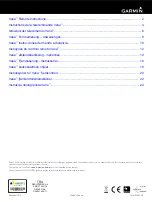
57
e
f
g
h
With rim brakes the sides of the rims also serve as brak-
ing surfaces. An untrue wheel can impair your braking
effect. It is therefore advisable to check the wheels for
trueness from time to time. For this purpose lift the
wheel off the ground and spin it with your hand. Watch
the gap between the rim and the brake pads. If the gap
varies by one millimeter or more, you should ask your
MERIDA dealer to true up the wheel
(e)
.
G
Do not ride with untrue wheels. In the case of
extreme side-to-side wobbles, the brake pads
of rim brakes can miss the rim and get caught
in the spokes! This normally instantly jams the wheel
and throws you off your bike.
A
Loose spokes must be tightened at once. Oth-
erwise the load on the other spokes and the
rim will increase.
A
Truing (retruing) wheels is a difficult job
which you should definitely leave to your
MERIDA dealer.
Tire puncture
Flat tires are the most common cause of puncture during
cycling. However, as long as you have the necessary
tools and a spare tube or a repair kit, this need not mean
the end of your cycle ride. If your wheels are attached
with quick-releases to the frame and the fork, you only
need two tire levers and a pump
(f)
.
I
Before removing a wheel, read the chapters
“Mounting wheels” and “How to use the
quick-releases”. If you are in doubt or if you
have any questions, contact your MERIDA dealer.
Dismounting wheels
If your bike has mechanical rim brakes (
cantilever and
V-brakes
) you first have to unhook the brake cable from
the brake arm
(g)
. To do this, grip the rim with one hand
and press the brake pads and/or arms together. In this
position the usually barrel shaped nipple of the lateral
brake cable or the brake hose (of V-brakes) can easily
be disengaged.
If your bike has
hydraulic rim brakes
from Magura, un-
lock its quick-release
(h)
on one side of the brake
and
remove the brake from the brake mount.
Summary of Contents for City Bikes
Page 113: ...MERIDA com ...
















































